Alaia Board Insights: Design, Performance, and More
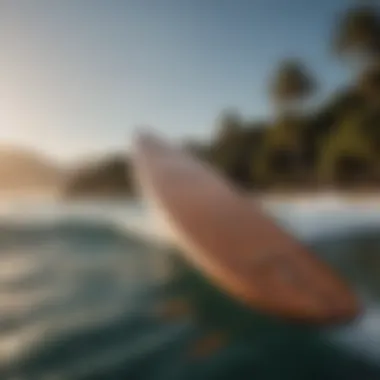
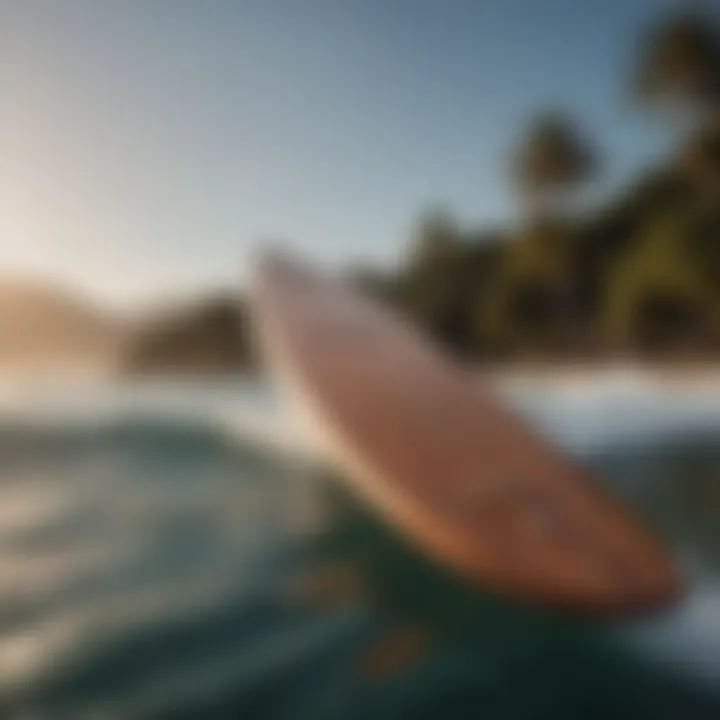
Intro
The Alaia board, often viewed as a piece of art as much as a functional surfing tool, harbors a rich history in the realm of water sports. Traditionally crafted from wood with a streamlined design, its aesthetic appeal is matched only by its performance in the waves. While contemporary surfboards have evolved due to advances in materials and technology, the Alaia board celebrates a more mechanical and organic experience. This quintessential piece of surfing equipment deserves to be examined under the lens of both design and functionality.
In this exploration, we will unroll the layers of craftsmanship involved in creating these boards, particularly how each feature contributes to its unique behavior in water. Whether you're a seasoned surfer or a newcomer to the watersport scene, understanding the nuances of the Alaia board can greatly enhance your surfing experience.
We aim to delve into the historical roots of the Alaia, drawing a vivid picture of its origins and evolution. We'll scrutinize the various characteristics that set it apart from more modern alternatives, tapping into the wisdom and insights of those who have ventured into the waves with this classic board. Additionally, we will address practical implications of performance in diverse water conditions, unveiling how environmental factors affect the ride. Also, we'll cover the environmental impact of these boards, an increasingly pertinent topic in a world where sustainability is key.
As we tread into gear essentials and techniques, our goal is to provide a comprehensive guide tailored to surfers and enthusiasts alike. This resource not only informs but also inspires, inviting you to embrace the artistry and functionality that the Alaia board has to offer.
Preamble to the Alaia Board
The Alaia board has carved out a niche in the world of surfing, attracting attention from both traditionalists and modern enthusiasts alike. It represents not just a crafting style but also a philosophical approach to riding waves. Knowing about the Alaia board isn’t merely about understanding how to ride; it intertwines with the culture and history of surfing itself. This section lays the groundwork for a deeper exploration of its significance, showcasing how its design, performance, and unique characteristics blend together to create an unparalleled surfing experience.
Definition and Overview
The Alaia board, distinct in its elegance and simplicity, is a surfboard fashioned without fins. Typically made of wood, its flat, thin profile allows for quite an agile ride. In essence, the board is a throwback to simpler times, where craftsmanship is valued over mass production techniques. These boards are usually around 5 to 8 feet long and boast a sleek contour that combines beauty with functional design. Its smooth, flowing lines reflect traditional artistry, while the absence of traditional fins offers a different application of surfing skills, challenging riders to develop balance and technique in new ways.
"The Alaia board is not just a piece of equipment; it's a connection to the ocean that requires skill and respect."
Historical Significance
The origins of the Alaia board trace back to ancient Hawaii, where Polynesian cultures first crafted similar surfboards from local woods. These early boards were symbols of status, spirituality, and mastery over the waves. Fast forward to the 21st century, the Alaia has resurfaced as a celebrated design influenced by both its roots and contemporary innovation. Their revival can be linked closely with the push towards eco-friendly and sustainable surf practices, as many artisans now utilize reclaimed materials to create new boards that honor sustainable practices. In essence, they embody the spirit of surfing's past while paving the way for its future.
Understanding both its historical context and how it fits into today’s surfing scene unveils the depth of the Alaia board. It balances the weight of tradition with the lightness of modernity, making it a compelling subject for surfers and historians alike. As we delve further into its characteristics and performance, it becomes clear that this board is much more than just a tool; it is a bridge connecting surfers to their heritage, the ocean, and their own personal growth as wave riders.
Key Characteristics of the Alaia Board
The Alaia board holds a special place in the surfing world, separating itself from the contemporary surfboards in both design and functionality. These boards are not just tools for riding waves; they represent a blend of tradition, artistry, and performance. Understanding the key characteristics of the Alaia board is crucial, as it opens up the discussion on how these aspects can impact the overall surfing experience.
Construction Materials
The materials used in making Alaia boards can significantly influence their performance. Traditionally, these boards are crafted from wood, notably Paulownia or Cedar, known for their lightweight yet sturdy properties. The natural fibers in wood provide a unique flex pattern that many believe enhances the board's responsiveness on the water.
Many contemporary craftsmen still emphasize the use of these organic materials over synthetic alternatives, wanting to keep the spirit of the original Alaia alive. This choice reflects both sustainability and a deep respect for the craft.
Moreover, the lack of foam technology means that the boards may take some getting used to for those accustomed to modern surfboard sensations.
Design Variations
The design variations found in Alaia boards can have a direct impact on how they perform in different conditions and for varying skill levels. Surfboards can be flashy, boasting vibrant colors and innovative shapes. But the Alaia leans toward simplicity and functionality instead.
Traditional Vs. Modern Designs
When contrasting traditional with modern designs, one might look at how functionality has evolved over time. A classic Alaia board typically has a flatter bottom and a narrow profile, promoting speed and stability on small waves. In contrast, modern variations often assimilate some elements from contemporary boards, such as pronounced rocker or pronounced tail shapes.
Many riders find that the simplicity and direct touch of the traditional design enhance their connection with the water, making it a popular choice.
However, a modern design might offer added versatility, appealing to a wider range of surfing conditions and styles. The key here is understanding your own surfing preferences—what might be an advantage for one surfer can be a disadvantage for another.
Fish Tail and Square Tail Variations
Fish tail and square tail designs serve specific purposes. Fish tails provide better maneuverability, allowing the surfer to initiate turns sharply. This is particularly beneficial in tighter spots where speed isn't as much of a factor. The unique curvature allows for a looseness that can turn quickly and adapt to shifting wave patterns.
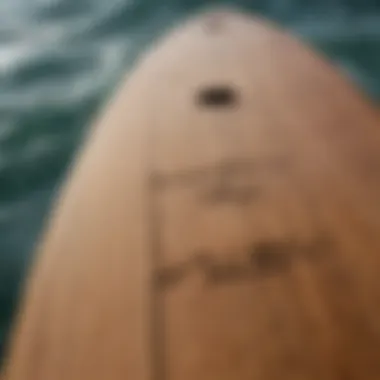
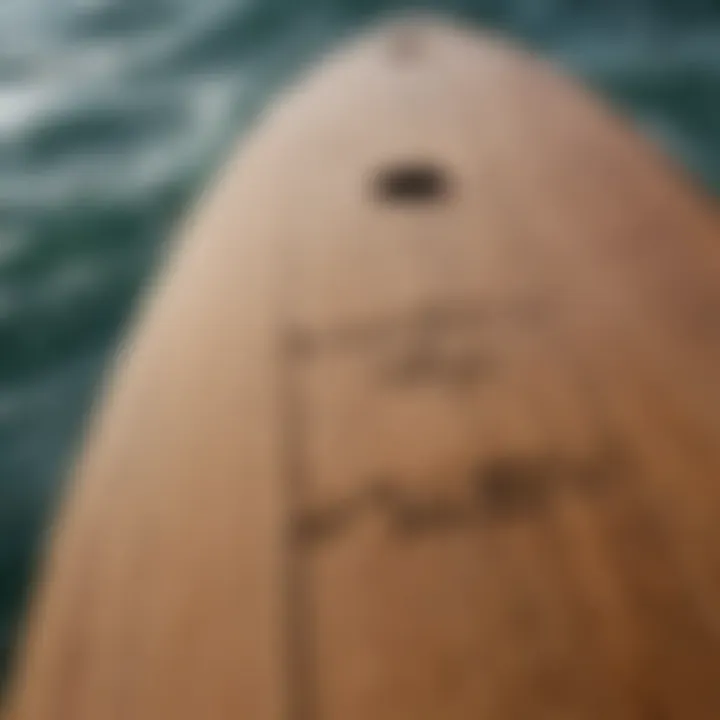
On the other hand, square tails deliver a measured grip on the water, making for smoother rides in larger swells. The flat edge enables the surfer to project speed and line through more powerful waves. Assessing your surfing style can lead to the right choice between these tail variations—both can be beneficial depending on conditions and personal preference.
Surface Mechanics
The surface features of Alaia boards play a significant part in their overall performance. Mechanics such as bottom contours and rail profiles shape how the board interacts with water.
Flat Bottom Contour
The flat bottom contour is a hallmark feature of the Alaia board. Its design allows for a straight-line glide and excellent speed on small waves. This characteristic has contributed to its favorable reputation in the longboard community as they've adopted similar sensibilities.
This design also means life in chop is generally pleasant, as the flat bottom can cut through uneven surfaces rather than bouncing off them. Yet, in high-performance scenarios, this could limit advanced tricks and maneuvers where curves and transitions come into play.
Rail Profiles and Their Impact
Rail profiles further refine the engagement with water. Different shapes can create varied resistance and lift. A softer rail, for instance, makes for smooth transitions between turns but may lack grip during more aggressive maneuvers. This characteristic can be a double-edged sword—more paddling efficiency versus less control during high-speed actions.
On the flip side, a sharper rail can enable improved grip and responsiveness during intense surfing but can be unforgiving for those still honing their skills.
To wrap it up, the key characteristics of Alaia boards bring a wealth of decision-making factors that surfers must consider. Whether it's the choice of material, design variation, or surface mechanics, each aspect leads to different outcomes in flat or choppy waters. Finding the right combination can turn an ordinary surf session into an exhilarating ride.
Performance Analysis in Different Conditions
When it comes to surfing, understanding a board’s performance across various conditions is crucial. The Alaia board, with its unique design and traditional craftsmanship, stands out in how it interacts with the water. From small, gentle waves to powerful swells, each experience brings different challenges and rewards. Analyzing performance is not just about what works best; it's about knowing how the board behaves under specific conditions, which can significantly affect a surfer's experience.
Riding Small Waves
Small waves can often be overlooked by many surfers aiming for the thrill of bigger surf, but riding a smaller swell with an Alaia board can be a delightful experience. The flat bottom contour of the Alaia is designed deliberately to provide a smoother glide over the water's surface. This feature allows surfers to maintain speed even when the waves aren't packing much power.
Riding small waves requires a certain finesse. Surfers must know how to read the swell, timing their movements just right. The Alaia excels here, allowing its rider to harness micro-movement and micro-momentum. One often finds that the need to utilize subtle shifts of weight can transform a mundane surf day into one filled with joy.
Key benefits when riding small waves include:
- Smooth glide: Enhanced speed through a well-designed flat bottom.
- Control: Surfers can utilize their weight to steer, making each wave an artful dance.
- Fun factor: Those mellow rides can be just as exciting with the right mindset and approach.
Effectiveness in Big Swells
Now, let’s not shy away from the big stuff. The Alaia board can indeed hold its own when the conditions get gnarly. One of its standout features during high surf is its lightweight and flexible construction. This allows for easy navigation through rough waters.
What most seasoned surfers appreciate is that the Alaia provides an exhilarating ride, even through massive swells. The key lies in understanding how to utilize the shape of the board effectively against the power of ocean waves. This board, with a fish tail or a square tail, provides just enough bite in the water to maintain speed while carving through larger swells.
"Mastering the big swells is not just about strength; it's about how you interact with your board and the water."
Surfers typically find that with the right technique, they achieve:
- Stability: Despite its lightweight nature, a well-constructed Alaia remains steady even when things get wild.
- Fluid turns: When executed properly, the transitions become seamless between waves.
- Enhanced thrill: Catching a big wave promotes an adrenaline rush like no other.
Adaptability to Varied Surfing Styles
Every surfer brings their own distinct style to the ocean, and the Alaia board recognizes that beautifully. This adaptability is what makes the board appealing to both beginners and seasoned pros alike. Some might prefer a loafy style while cruising on mellow swells, while others might lean towards a more aggressive approach, carving and utilizing the power of larger waves.
What stands out splendidly is the versatility of the Alaia to facilitate diverse techniques. Whether you are a paddleboarder looking for a unique experience, or a kitesurfer seeking those perfect gusts, the Alaia can fit into your repertoire. Each style of surfing offers unique feedback, helping individuals refine their skills.
Surfers can discover:
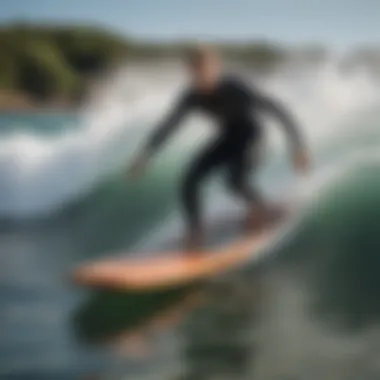
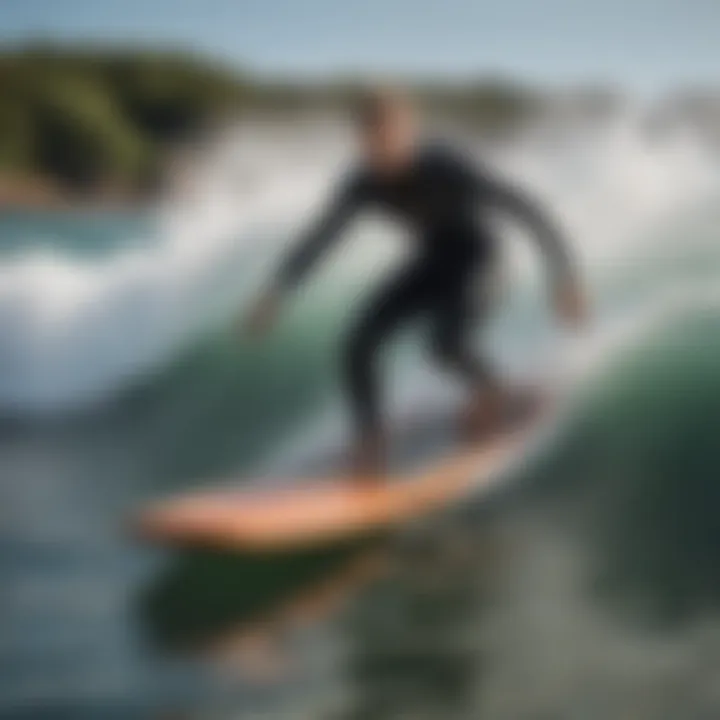
- Versatile rides: Shifting you from calm days to competitive surf.
- Skill development: Adapting to different styles enhances overall surfing proficiency.
- Personal expression: It allows each surfer to carve their own path, showcasing their individuality on the waves.
In diving into the performance analysis across various conditions, it's clear that the Alaia board offers something unique. The nuances in its design and functionality enhance the overall surfing experience, catering to the diverging needs of surfers everywhere.
User Perspectives and Testimonials
User feedback plays a crucial role in understanding the Alaia board's usability and effectiveness in real-world settings. These insights help both potential buyers and seasoned surfers to make informed decisions about the equipment they choose to ride. By hearing from actual users, we can grasp not just the technical specs but also the holistic experience that the Alaia board provides. From the thrill of riding for the first time to the nuanced performance insights from advanced surfers, these testimonials offer perspectives that textbooks often miss.
Beginner Experiences
For many newcomers, the Alaia board can present a mixed bag of experiences. Most beginners note the board’s lightweight nature, which can be deceiving. The first ride often feels like a lesson in balance; the traditional design lacks the stability many are accustomed to with modern boards. One user mused that learning to ride an Alaia felt somewhat akin to learning to skateboard on a very fine edge—"You’ll constantly fight to stay upright, but that struggle is part of it all."
It's not uncommon for novice surfers to face a wave of frustration and exhilaration in equal measure. Several users have shared their initial attempts: falling off more times than they could count. Yet, what stands out in many testimonials is a sense of accomplishment once they finally catch a wave cleanly.
Many report that the feeling of riding an Alaia is like dancing with the ocean, a sentiment echoed across various reviews. That sense of connection with the water, despite the learning curve, is often cited as a reason to persist.
- Learning Curve: The unique design demands patience and practice.
- Stability Issues: Beginners often experience difficulties balancing at first.
- Sense of Accomplishment: Finally catching a wave feels like hitting a home run!
Advanced User Insights
On the other end of the spectrum, advanced users offer a different narrative. For them, the Alaia board is often a tool for artistic expression and performance enhancement. Users who've honed their skills on a variety of boards tend to appreciate the nuances in how the Alaia glides over waves.
Advanced riders frequently highlight another crucial aspect—the board's design allows for a more intimate surfing experience. One seasoned surfer remarked, "Riding an Alaia is like playing a musical instrument. The better you are, the more you can express yourself on the water."
Experienced users also discuss the versatility of the Alaia in different surf conditions. Reports indicate that those who have mastered the board can maneuver quickly and perform tricks that seem almost impossible to onlookers.
Key insights include:
- Performance in Varied Conditions: The board excels in small to medium waves, offering exhilarating rides.
- Creativity in Movements: Advanced surfers appreciate how the board allows for more fluid, creative maneuvers.
- Connection with the Ocean: Riders often claim a distinct bond with the waves when using an Alaia, akin to riding a natural extension of themselves.
"The Alaia board isn't just a piece of equipment. It’s an experience that changes how we connect with the wave and, consequently, ourselves."
Maintenance and Care of the Alaia Board
Taking care of an Alaia board is not just a matter of preserving its good looks, but also about enhancing its performance and ensuring it lasts through the years. Similar to fine wine that needs the right conditions to age well, Alaia boards require proper maintenance to keep them in peak condition. Surfers often overlook this aspect until it's too late. Keeping on top of cleaning and repairs can mean the difference between a subpar ride and a smooth glide over the waves.
Regular maintenance routines can significantly extend the lifespan of an Alaia. Attention to cleaning practices and effective repair techniques can safeguard your board against the natural wear and tear that comes from regular use in the ocean. This understanding helps surfers not just connect with their boards but also respect the craftsmanship that goes into each one.
Cleaning Practices
When it comes to cleaning an Alaia board, you're not just hosing it down after use. There is a method that should be followed, one that takes into consideration the materials used in its construction. A mix of seawater, sand, and sun can wreak havoc over time if not dealt with properly.
To clean your board effectively:
- Rinse Immediately: After each session, rinse your board with freshwater, removing any saltwater residue and sand that sticks to it.
- Use a Soft Cloth: For any stubborn spots, a non-abrasive cloth with a mild soapy solution does wonders. Avoid harsh chemicals as they can damage the wood and other components.
- Dry Thoroughly: Make sure to dry the board completely before storing it; this prevents moisture buildup which can lead to warping or mold.
- Storage Matters: Keep your board out of direct sunlight for prolonged periods, as UV rays can fade and weaken it.
Investing time in these cleaning practices pays off. A well-maintained board provides not only aesthetic appeal but also a noticeable difference in performance during your rides.
Repair Techniques
Even with the best care, an Alaia board can suffer from dings and scratches. Knowing how to repair them is essential for maintaining the integrity of your equipment. Let's break this down into two key areas: dealing with dings and scratches, and fin and tail enhancements.
Dealing with Dings and Scratches
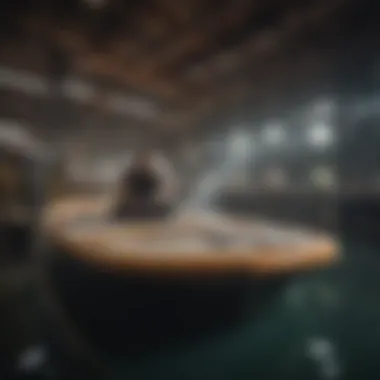
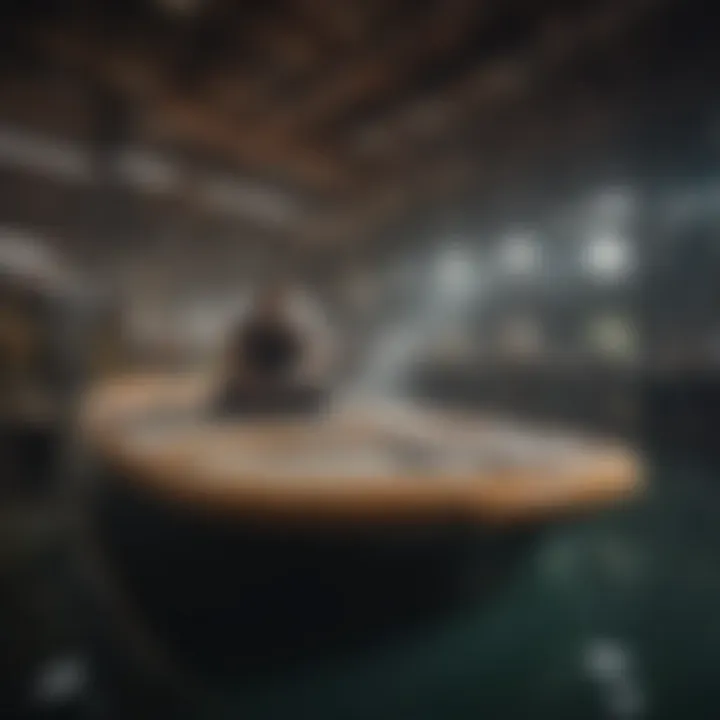
Dings and scratches are part and parcel of board ownership, but how you handle them can make a world of difference. Performing timely repairs keeps your board in good shape.
- Identify the Damage: Look for cracks, chips, or dings that may have penetrated the surface. The sooner you catch these, the easier it is to fix.
- Use Epoxy Repair Kits: Many surfers find epoxy kits, which can be conveniently bought online or at local shops, to be the best option. They provide a quick and often long-lasting solution.
- Unique Advantage: A repair system using epoxy helps to maintain the hydrodynamic shape of the board, which is vital to performance.
- Drawback: One downside may include allowing for proper curing time, which can keep you off the waves for a while.
By regularly addressing minor blemishes, it adds to the longevity of your board and the quality of your rides.
Fin and Tail Enhancements
Another aspect of repair involves the fins and tail of the Alaia board. These parts significantly influence how the board performs on the water. Whether you are securing fins or making tail modifications, they are vital for optimizing performance.
- Fins: Replacing fins with ones that have varying shapes and sizes can vastly change how your board reacts to waves. It allows surfers to fine-tune their performance based on personal style and wave conditions.
- Tail Modifications: Adjustments to the tail shape can enhance maneuverability, allowing for sharper turns and better speed in various conditions.
- Why This Matters: Fin and tail enhancements are popular as they allow customization that meets individual surfing needs.
- Keep in Mind: These modifications may take time to adjust to, as what works for one surfer may feel off to another.
Environmental Impact and Sustainability
Understanding the environmental impact and sustainability of Alaia boards is vital in today’s surfing world. As more surfers become conscious of their footprint on the ocean and beach environments, boards made from eco-friendly materials and produced sustainably are gaining an edge in popularity. This section will explore how the choices made in the production of Alaia boards can benefit both the surf community and the environment.
Materials Used
Alaia boards traditionally utilize wood, which connects them to nature in a way that synthetic boards often do not. Common types of wood include paulownia, which is lightweight and strong, and can be sourced sustainably. When choosing materials, it’s essential to opt for those that come from sustainable forestry practices. This ensures that as one rides the waves, they're also supporting sustainable ecosystems.
Here’s a quick breakdown of common materials:
- Paulownia Wood: Grows rapidly and absorbs CO2 effectively.
- Recycled Materials: Some manufacturers are now incorporating recycled plastics into their designs, reducing waste.
- Natural Finishes: These eliminate harmful chemicals found in conventional lacquers, avoiding VOC emissions.
By selecting boards made from sustainable materials, surfers not only enjoy a performance-enhancing product but also contribute to environmental stewardship.
Sustainable Practices in Production
Creating an Alaia board with an eye towards sustainability involves integrating eco-conscious methods at every step of the manufacturing process. Many producers forego mass production methods, choosing instead to craft boards by hand or in small batches. This reduces energy consumption and waste. Moreover, they often employ local artisans, which supports the community and minimizes transportation emissions.
Sustainable practices in Alaia board production can include:
- Gluing and Finishing Techniques: Using natural adhesives and finishes without harmful solvents.
- Waste Mitigation: Efficient cutting of the materials to ensure that off-cuts can be reused in other projects.
- Education and Awareness: Some brands engage with surfers about sustainability, encouraging responsible use in the water and highlighting the importance of preserving surf spots.
"The waves might wash away footprints, but the choices we make in the surfboard we ride can leave a lasting mark on our planet."
As the surfing community continues to embrace an eco-friendlier mentality, Alaia boards stand as a testament to a blend of tradition, performance, and respect for Mother Nature. Choosing sustainable boards is not merely a trend; it represents a commitment to the ocean we cherish.
Closure and Future of Alaia Boards
As we wrap up this exploration, the future of Alaia boards is a tapestry woven with threads of innovation, tradition, and sustainability. These boards are more than just equipment; they embody a rich heritage that continues to inspire both surfers and manufacturers alike. Their unique design fuels a passion for riding waves in a manner that connects the user to the ocean’s essence. Understanding the trajectory of Alaia boards can help enthusiasts, from seasoned surfers to newcomers, appreciate the depth of this artful sport.
Trends in Innovation
In the world of surfboard design, one can’t ignore how important innovation is. While Alaia boards stay true to their roots, advancements in materials and technology are making waves. Manufacturers are experimenting with different types of wood and composite materials that enhance buoyancy while maintaining that classic feel. For example, new water-resistant coatings can improve the durability of these boards, ensuring that they withstand the elements without losing their charm.
Moreover, some creators are incorporating smart technology, such as attaching monitors to gauge performance metrics while surfing. This means riders can analyze their performance and improve technique effectively. Yet, despite these changes, the essence of the Alaia board remains intact, echoing the philosophy that simplicity can be a true form of mastery.
Ultimately, as surfers crave more connection with their gear, manufacturers might lean further towards eco-friendly practices, reinforcing the sustainability ethos.
Alaia Boards in Competitive Surfing
Traditionally viewed as a tool for recreational riding, the Alaia board is making its mark in competitive environments. More surfers are recognizing the competitive edge that comes with these uniquely designed boards. Competitors appreciate their ability to maneuver with finesse, even in challenging conditions. The agility and responsiveness of a well-crafted Alaia can create an exhilarating experience, often leading to spectacular runs in surf competitions.
Yet, it’s not just about performance. There’s an emerging trend among competitors to showcase the beauty and craftsmanship of these boards in their heats. Riders are using Alaia boards not merely to compete but to tell a story of heritage and artistry, merging athleticism with aesthetics.
"Riding an Alaia board in a contest is not just about winning; it's a way to express individuality and respect tradition. It's a dance on water, a conversation with the sea."
With the interest in Alaia boards growing within competitive circles, we might see more events that celebrate this unique style of surfing, further solidifying the Alaia’s place in the surfing community.



